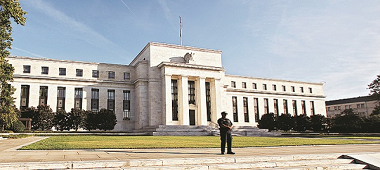from Liberty Street Economics
— this post authored by Michele Cavallo, Marco Del Negro, W. Scott Frame, Jamie Grasing, Benjamin A. Malin, and Carlo Rosa
In the wake of the global financial crisis, the Federal Reserve dramatically increased the size of its balance sheet – from about $900 billion at the end of 2007 to about $4.5 trillion today. At its September 2017 meeting, the Federal Open Market Committee (FOMC) announced that – effective October 2017 – it would initiate the balance sheet normalization program described in the June 2017 addendum to the FOMC’s Policy Normalization Principles and Plans.

This post summarizes analysis conducted in our recent working paperthat seeks to understand the fiscal implications of the Federal Reserve’s balance sheet normalization program. Of course, monetary policy alwayshas fiscal implications since it influences interest rates paid on government debt. But changes in the Federal Reserve’s balance sheet have additional fiscal consequences related to the central bank’s net income that is remitted to the U.S. Treasury. While the level and volatility of remittances do not prevent the FOMC from conducting monetary policy in conformity with its mandate and are thus not the focus of monetary policy decisions, they can potentially be associated with political-economy concerns (see, for example, Dudley).
In the paper, we assess the fiscal implications of different longer-run sizes of the balance sheet. We conduct simulations that leverage two models maintained by the Federal Reserve Board: the System Open Market Account (SOMA) model that generates detailed projections of the evolution of the balance sheet and associated net income; and the public version of the FRB/US model, a large-scale macroeconomic model, which we use to generate future paths for interest rates as well as government revenues, expenditures, and debt.
We explore how different longer-run sizes of the Federal Reserve’s balance sheet affect the average size and variability of remittances and the likelihood of net losses. We consider four scenarios tied to longer-run levels of reserve balances: $100 billion (which is intended to represent a return to a pre-crisis “scarce-reserves” balance sheet), $2.3 trillion (which roughly corresponds to the current level of reserves), and two levels in-between, namely $500 billion and $1 trillion. The $2.3 trillion longer-run reserve balance scenario means that reserves would remain at their currently elevated level. This implies, in turn, that the balance sheet would immediately start growing at a pace mostly in line with the expansion in key liabilities such as the value of Federal Reserve notes and capital paid-in. It is important to stress that this scenario is neither consistent with the current FOMC’s balance sheet normalization program nor an indication of any potential future Federal Reserve policy. We present this counterfactual, illustrative scenario only to understand the fiscal implications that could arise with reserve balances close to current levels. The other scenarios, which feature a gradual reduction in securities holdings through the medium term, are in line with the FOMC’s balance sheet normalization program. All other assumptions needed are based on publicly available information (such as the June 2017 June 2017 addendum to the FOMC’s Policy Normalization Principles and Plans and the June 2017 Summary of Economic Projections forecast). Given these assumptions, for each scenario, we run stochastic simulations of the FRB/US model and compute summary statistics for Federal Reserve net income and remittances to the Treasury. Specifically, for each of our four scenarios, we generate paths for interest rates and other financial and macroeconomic variables using the March 2017 public version of FRB/US. Then, for each path, we derive the implications for remittances and other variables of interest.













Leave A Comment